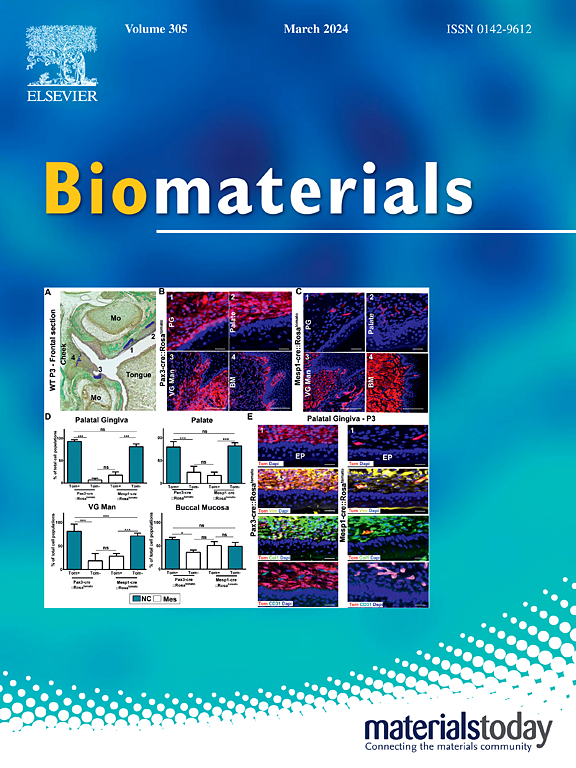High-density lipoprotein-based nanoplatform reprograms tumor microenvironment and enhances chemotherapy against pancreatic ductal adenocarcinoma
IF 12.8
1区 医学
Q1 ENGINEERING, BIOMEDICAL
引用次数: 0
Abstract
Pancreatic ductal adenocarcinoma (PDAC) is highly aggressive, with limited success in traditional therapies due to the fibrotic, immunosuppressive, pro-metastatic tumor microenvironment (TME), which collectively impede the drug accumulation and accelerate the tumor progression. In this work, we developed a PDAC-customized nutrient-mimicking reconstituted high-density lipoprotein (rHDL) capable of efficiently co-encapsulate versatile TME regulating cannabidiol and cytotoxic gemcitabine to simultaneously reprogram TME while suppressing PDAC progression. Specifically, a small-sized, nutrient-like rHDL was constructed to realize deep PDAC parenchyma penetration and efficient intra-tumoral uptake. Next, natural herbal compound cannabidiol was screened and incorporated into rHDL to regulate TME via attenuating fibrosis, reliving immunosuppression and mitigating metastatic tendency. At last, gemcitabine, the PDAC gold standard first-line therapy was co-delivered by the PDAC-customized rHDL to overcome drug resistance and amplify its PDAC suppression. Our findings demonstrate the feasibility of an integrated multi-stage TME regulation strategy for improved PDAC therapy, and might represent a modality in promoting chemotherapy against PDAC.

求助全文
约1分钟内获得全文
求助全文
来源期刊

Biomaterials
工程技术-材料科学:生物材料
CiteScore
26.00
自引率
2.90%
发文量
565
审稿时长
46 days
期刊介绍:
Biomaterials is an international journal covering the science and clinical application of biomaterials. A biomaterial is now defined as a substance that has been engineered to take a form which, alone or as part of a complex system, is used to direct, by control of interactions with components of living systems, the course of any therapeutic or diagnostic procedure. It is the aim of the journal to provide a peer-reviewed forum for the publication of original papers and authoritative review and opinion papers dealing with the most important issues facing the use of biomaterials in clinical practice. The scope of the journal covers the wide range of physical, biological and chemical sciences that underpin the design of biomaterials and the clinical disciplines in which they are used. These sciences include polymer synthesis and characterization, drug and gene vector design, the biology of the host response, immunology and toxicology and self assembly at the nanoscale. Clinical applications include the therapies of medical technology and regenerative medicine in all clinical disciplines, and diagnostic systems that reply on innovative contrast and sensing agents. The journal is relevant to areas such as cancer diagnosis and therapy, implantable devices, drug delivery systems, gene vectors, bionanotechnology and tissue engineering.
 求助内容:
求助内容: 应助结果提醒方式:
应助结果提醒方式:


